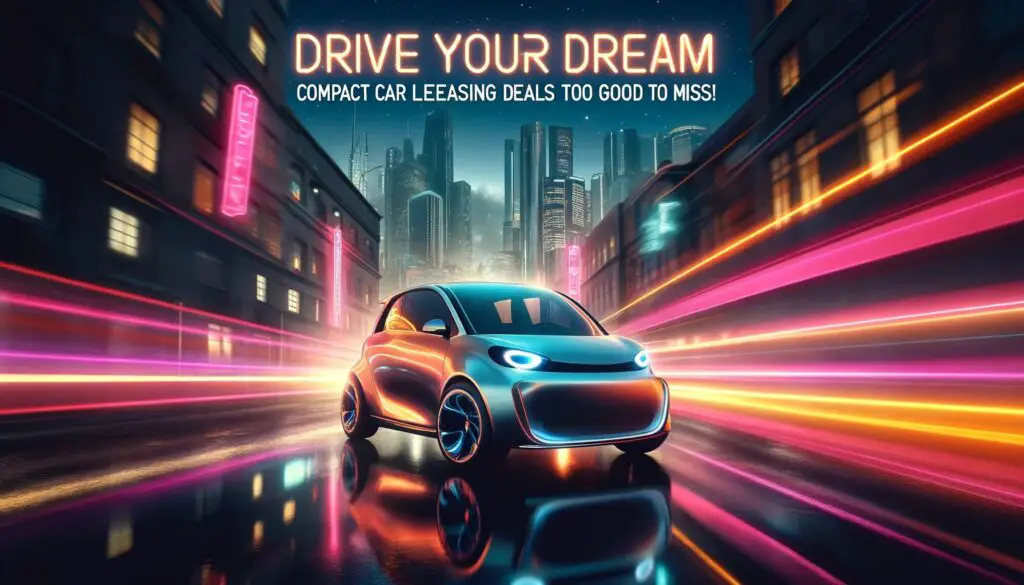I. Introduction
A. Explanation of TANF (Temporary Assistance for Needy Families)
Temporary Assistance for Needy Families (TANF) isn’t just a government program; it’s a lifeline for families in Oregon who are struggling to make ends meet. In the face of financial hardship, TANF steps in to provide the kind of support that can make all the difference in the world.
For those families living on the edge, TANF is a beacon of hope. It’s a safety net that ensures that no child in Oregon has to go without the essentials. It’s about putting food on the table, keeping the lights on, and providing a stable home for those who need it most.
In the heart of Oregon, TANF is more than an acronym; it’s a symbol of compassion and community. It’s a promise that no one has to face adversity alone. When the going gets tough, TANF is there to remind us that, in Oregon, we take care of our own.
So, remember, TANF is not just about financial assistance; it’s about showing empathy and understanding to our fellow Oregonians in their time of need.
B. Significance of TANF in Oregon
TANF holds immense significance in Oregon, helping thousands of families secure financial assistance and improve their quality of life. This vital program plays a crucial role in alleviating financial hardships for many Oregonians, ensuring they can meet their basic needs and work towards a better future. Through TANF, the state of Oregon demonstrates its commitment to supporting families in their time of need, creating a stronger and more resilient community for all.
II. Eligibility Criteria
A. Having a Child Under 19
To be eligible for TANF in Oregon, families must have at least one dependent child under the age of 19. This criterion ensures that families with young children, who are often the most vulnerable, receive the support they need. By targeting families with dependent children, TANF aims to provide assistance where it’s needed most, offering a helping hand to those who are responsible for the well-being of the next generation. This eligibility requirement underscores the program’s commitment to aiding families in their efforts to provide a stable and nurturing environment for their children.
B. Residency Requirement
Applicants must be residents of Oregon to qualify for TANF benefits. This requirement ensures that the assistance goes to those within the state who are in need. By focusing on Oregon residency, TANF safeguards that the benefits are directed to individuals and families who are part of the local community. This criterion upholds the principle of supporting Oregonians facing financial challenges.
C. Citizenship or Qualified Immigrant Status
Eligible applicants must be U.S. citizens or qualified immigrants. This criterion ensures that the program supports individuals with legal status, upholding federal guidelines. By requiring citizenship or qualified immigrant status, TANF complies with legal and federal regulations, ensuring that benefits are provided to individuals who meet the necessary legal requirements.
D. Income Limitation
Income limitations are in place to ensure that assistance is provided to those with the greatest need. By setting income limits, TANF focuses on helping those whose financial resources are limited. This criterion serves as a means of targeting the assistance toward individuals and families who are experiencing financial hardship and may not have sufficient income to meet their basic needs.
E. Asset Limits
Asset limits are established to determine eligibility for TANF. This ensures the program’s focus on those with limited resources and prevents misuse. By implementing asset limits, TANF prevents individuals or families with substantial assets from accessing the program when their financial resources are not limited. This criterion ensures that the program’s assistance is directed to those who genuinely require support.
III. TANF Benefits
A. Determining Benefit Amount
The benefit amount under TANF is calculated based on the family’s income, household size, and other factors. This personalized approach ensures that the level of assistance provided is directly tied to the specific needs of each family. By taking into account factors such as income and household size, TANF strives to offer a financial lifeline that addresses the unique circumstances of each recipient. This approach reflects the program’s commitment to providing tailored support that helps families on their path to financial stability.
B. Maximum Monthly Benefit
Oregon sets a maximum monthly benefit amount, which may change annually. This figure is of paramount importance for recipients, as it defines the upper limit of financial support they can receive. Knowing the maximum monthly benefit is essential for recipients to understand the potential assistance they can access through TANF. This figure may vary over time, so staying informed about the current maximum benefit is crucial for those seeking TANF support.
C. Distribution through EBT System (Oregon Trail Card)
TANF benefits are typically distributed through the Electronic Benefit Transfer (EBT) system, using the Oregon Trail Card. This modern and efficient method of benefit distribution ensures that recipients can access their support in a convenient and user-friendly manner. The Oregon Trail Card acts as a secure means for families to receive and use their TANF benefits, offering them the flexibility to purchase essential goods and services while maintaining the dignity and privacy of their financial transactions. This distribution system streamlines the process and enhances the overall experience for TANF recipients.
IV. Work Requirements
A. Introduction to the JOBS Program
TANF recipients are often required to participate in the Job Opportunities and Basic Skills (JOBS) program. This program, integral to TANF, is designed to empower recipients by offering them a pathway to self-sufficiency through gainful employment. By participating in JOBS, TANF recipients gain access to a range of resources and support aimed at enhancing their employability and helping them secure a stable source of income.
B. Participation Obligations
Participants in the JOBS program must adhere to specific obligations designed to help them progress toward self-sufficiency. These obligations can include attending job training and educational sessions, fulfilling workfare responsibilities, actively seeking employment, and meeting other requirements outlined in the program. By meeting these obligations, TANF recipients not only fulfill their responsibilities but also position themselves to attain financial independence.
C. Job Training and Education
The JOBS program provides TANF recipients with valuable job training and education opportunities. These opportunities are instrumental in enhancing recipients’ employability, equipping them with the skills and knowledge required to secure and maintain employment. Through access to job training and education, participants can broaden their job prospects and increase their earning potential.
D. Workfare Activities
Some TANF recipients are required to engage in workfare activities as part of their participation in the JOBS program. Workfare involves contributing to the community by performing specific tasks and activities. By participating in workfare, recipients not only fulfill their program obligations but also play an active role in supporting their local community.
E. Job Search Requirements
Recipients may also need to actively seek employment, complying with job search requirements. These requirements involve actively searching for job opportunities, submitting job applications, attending interviews, and taking other steps to secure employment. By adhering to job search requirements, TANF recipients demonstrate their commitment to achieving financial self-sufficiency.
V. Additional Services
A. Child Care Assistance
TANF often includes child care assistance to help parents access employment opportunities. Child care assistance is a crucial component of TANF support, as it addresses one of the primary challenges parents face when seeking employment. By providing child care assistance, TANF ensures that parents can pursue job opportunities with the peace of mind that their children are well cared for.
B. Medicaid (Oregon Health Plan)
Recipients may also be eligible for the Oregon Health Plan, ensuring access to healthcare services. Access to healthcare is vital for the well-being of TANF recipients and their families. The Oregon Health Plan, often accessible to TANF recipients, guarantees that individuals and families have the necessary healthcare coverage to address their medical needs.
C. Food Stamps (SNAP)
TANF recipients may qualify for the Supplemental Nutrition Assistance Program (SNAP), enhancing their food security. SNAP plays a critical role in ensuring that TANF recipients have access to an adequate and nutritious food supply. This program supports families in maintaining their food security, complementing the assistance provided by TANF.
D. Housing Assistance
Assistance programs are available to help families secure stable housing. Stable housing is a fundamental aspect of financial security. TANF recognizes the importance of housing stability and offers support to families in need of secure and affordable housing. This assistance program contributes to the overall well-being and stability of TANF recipients and their families.
VI. Application Process
A. Applying in-Person at Oregon DHS Office
Applicants can initiate the TANF application process by visiting an Oregon Department of Human Services (DHS) office. Applying in-person at a DHS office allows individuals to receive personalized assistance, guidance, and support throughout the application process. This option is particularly beneficial for those who prefer face-to-face interactions or have specific questions about the application requirements.
B. Online Application through ONE Applicant Portal
An online application option is also available through the ONE Applicant Portal, streamlining the process for tech-savvy applicants. The ONE Applicant Portal offers a convenient and efficient method of applying for TANF. It is designed to simplify the application process, making it accessible to those who prefer to apply online. This option is especially useful for individuals comfortable with digital tools and seeking a hassle-free application experience.
VII. Frequently Asked Questions (FAQs)
A. How is the TANF benefit amount calculated?
TANF benefit amounts are calculated based on several factors, including income, household size, and expenses.
B. What is the income limit for TANF in Oregon?
Income limits for TANF eligibility are subject to change and should be verified with the Oregon DHS.
C. Can non-citizens receive TANF benefits?
Non-citizens who meet specific criteria may be eligible for TANF benefits.
D. What are the asset limits for TANF eligibility?
Asset limits ensure that TANF benefits are directed toward those with limited resources.
E. Are there exemptions to the work requirements?
Certain exemptions exist, allowing some recipients to be excused from work requirements.
F. How to check the balance on the Oregon Trail Card?
Recipients can easily check their benefit balances on the Oregon Trail Card through the EBT system.
G. What are the income limits for child care assistance?
Income limits for child care assistance may vary, and applicants should check with the Oregon DHS for the most up-to-date information.
H. How can I apply for Medicaid in Oregon?
Information about Medicaid application procedures can be obtained through the Oregon DHS.
I. How do I qualify for food stamps (SNAP)?
Qualifications for SNAP are separate from TANF, and eligibility criteria can be found through the appropriate channels.
J. What housing assistance programs are available in Oregon?
Oregon offers various housing assistance programs, and details can be obtained through the Oregon DHS.
K. How long does it take to process a TANF application?
The processing time for TANF applications can vary, and applicants should contact the Oregon DHS for estimated timelines.
L. What documents are required when applying for TANF?
Applicants typically need to provide identification, income verification, and other relevant documents when applying for TANF.
M. Can I appeal a TANF denial?
Recipients have the right to appeal TANF denials, and the Oregon DHS can provide guidance on the appeals process.
N. What happens if my income changes while receiving TANF?
Recipients are required to report changes in income promptly, as this can affect benefit amounts.
O. Is there a time limit on TANF benefits?
TANF benefits are often subject to time limits, and recipients should be aware of these restrictions.
P. Can I reapply for TANF if I’ve been off the program?
Former recipients may reapply for TANF if they still meet eligibility criteria.
Q. How can I report changes in my household or income?
Recipients can typically report changes through the Oregon DHS website or by contacting their local office.
R. What is the Oregon Department of Human Services (DHS)?
The Oregon Department of Human Services (DHS) is the agency responsible for administering TANF and other social services programs in the state.
S. How to contact the DHS Public Benefits Hotline?
The DHS Public Benefits Hotline provides a convenient way to get in touch with the agency for questions and assistance.
T. TANF car program ?
The TANF car program provides assistance to low-income families by offering support for transportation needs. This program aims to help individuals access reliable transportation, enabling them to secure and maintain employment, attend school, and fulfill other essential obligations
VIII. Conclusion
A. Recap of TANF in Oregon
In summary, TANF in Oregon is a vital program that provides crucial financial assistance to families in need, helping them meet their basic needs and improve their quality of life. By offering support to those facing financial hardships, TANF serves as a lifeline, ensuring that families do not have to go without essentials. It plays a critical role in securing stable homes, putting food on the table, and keeping the lights on for those who need it most.
B. The importance of the program in supporting families
TANF plays a significant role in supporting families and promoting self-sufficiency, making it a valuable resource for those facing financial hardship in Oregon. This program is more than just financial assistance; it is a symbol of compassion and community. It reflects Oregon’s commitment to taking care of its own, ensuring that no one has to face adversity alone. When times get tough, TANF is there to extend a helping hand and demonstrate empathy and understanding to fellow Oregonians in their time of need.
This comprehensive guide has provided a detailed overview of TANF in Oregon, covering eligibility criteria, benefit information, work requirements, and additional services. Additionally, it has addressed frequently asked questions, ensuring that readers have all the information they need to navigate the program effectively and make informed decisions to improve their quality of life.





